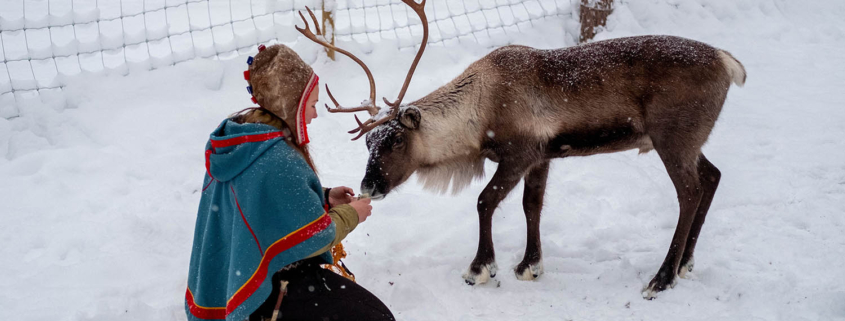The Impact of Europe’s Green Transition on the Sámi
Efforts by European government and industry to reduce carbon emissions and promote a “shift toward economically sustainable growth” and a fossil-free economy are referred to as “the green transition.” However, Europe’s approach to achieving a future that involves clean energy is adversely affecting the Indigenous Peoples of Scandinavia – the Sámi.
Europe is on a fast pace to achieve its goal to become “the world’s first net-zero emissions continent by 2050”; their efforts include building large-scale wind and solar farms, mining materials and metals for electric vehicles, and harvesting wood and other natural materials for constructing buildings.
The green transition (on top of climate effects and colonization) is affecting the Sámi’s way of life and their symbiotic relationship with reindeer. The Sámi have inhabited northern Scandinavia (i.e., Norway, Sweden, and Finland) for thousands of years. Rising Arctic temperatures have led to changes in reindeer behaviour and food availability. When the snow melts and then refreezes quickly, the reindeer cannot freely graze and get to the lichen, their food. Furthermore, wind turbines farms, aimed to harness the wind as an alternative energy resource are being built on reindeer calving and grazing lands, thus disturbing the behaviours and severely limiting the regeneration of reindeer herds.
While the green transition is touted as a necessary path for Europe to achieve net zero, industrial and government efforts must address the principle of “do no significant harm” to prevent negative outcomes for the Sámi.
By Leela Viswanathan
(Image Credit: Nikola Johnny, Unsplash)

 Nikola Johnny
Nikola Johnny
 Kalen Emsley
Kalen Emsley Annie Spratt
Annie Spratt